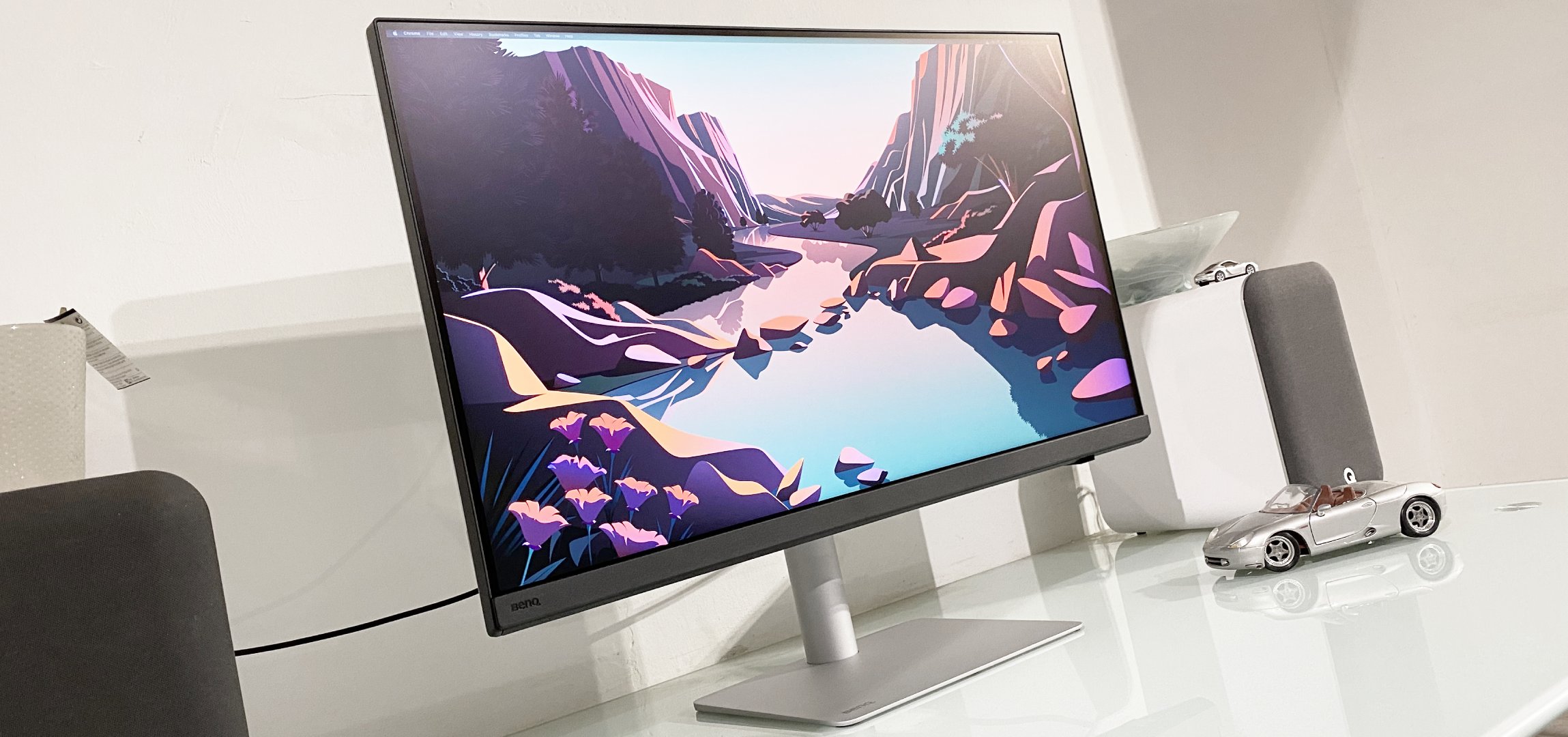Josh Clark on going beyond mobile
Mobile pioneer Josh Clark tells Tanya Combrinck how we can organise for the multi-device future, why we should be passionate about our values rather than our techniques, and how he’s preparing to go beyond mobile
This article first appeared in issue 232 of .net magazine – the world's best-selling magazine for web designers and developers.
"I have a dirty little secret," Josh Clark tells us. “I had no interest in mobile before the iPhone. It was phones pretending to be computers and doing a bad job. When the iPhone came out, it was a computer pretending to be a phone: it brought a new model of computing that was personal, ubiquitous and social – something I got really excited about. It opened up new avenues of design and information interaction we’d only been talking about for decades. Suddenly we could do it all.”
Josh Clark is the author of Tapworthy, a design guide for iPhone apps he wrote two years ago. The ideas of that book still hold true, but an important piece of thinking that’s emerged since then is his conviction that the mobile use case just doesn’t exist. “It’s something that’s slow in being acknowledged by a lot of people in the industry. We’ve inherited this set of assumptions from the early pre-iPhone era that mobile is for light, companion computing – information snacking. You have to anticipate that; it’s part of our mobile experience. But mobile is also on the couch, in the kitchen. It’s the three-hour layover at the airport where we have plenty of attention to spare. That assumption that we have to design for stunted attention spans leads to a lot of bad experiences.
“We have to provide full access to content – not necessarily the same presentation – but full access, no matter what device you’re on.”
Siloed experiences
The problem of organising for a multi-device future of many different types of tablet, phone, TV and so on is something that’s exciting, but at the same time overwhelming for the industry right now. “Ten years ago on the web it was a problem to make our sites work on four different browsers – that seems quaint now,” says Clark.
“We have to be able to organise our content and our workflow for all those different devices, and we have to do it in a way that doesn’t punish the user for their device context, or worse, use their device context – such a small screen – to avoid hard design problems. This is something that I’m concerned about. I think we’ve stumbled a bit in the early days of doing this: we built separate, siloed experiences for separate devices that also siloed the content. It turns out this is not the way we’re using these devices in our lives. We expect to get anything anywhere.”
There’s a tough road ahead. “The explosion of devices and platforms that we’re contending with now is a crisis. It’s an organisational crisis, it’s a design crisis, it’s a workflow crisis. But the good news is that it’s also an opportunity to start fresh with smarter processes that will help us stay out of trouble in the future. If we set up the right workflows and the right design patterns now then we’ll be able to actually adapt to and absorb the new platforms as they come along.”
Clark believes that a strong focus on content strategy is the way forward. “I think a lot of our work right now is focused on presentation – it’s all about responsive design, progressive enhancement and all these frontend techniques, ignoring the whole vast area of content management. We need to think about organising our content so that it will flow into any device.”
Planting a flag
“Often we’re focusing on the frontend because that’s what we have control over,” says Clark. “Our content management systems are crufty, encrusted systems that we can’t touch or change very easily, and it’s intimidating to tackle that stuff. I think most companies don’t have the opportunity unless they’re building a new product. But that’s okay – as we try to take these future-friendly approaches, it’s not that we can flip a switch and instantly turn into a top-to-bottom best practices company. Rather, let’s plant a flag where we need to be, even if it’s far in the distance, and understand that every little thing we do should be moving in that direction.”
There’s much debate around which techniques should be used to solve our problems, but Clark tells us that getting our values right should be the priority. “The talk around responsive design has become full of religious fire.
It seems silly, because it’s just a technique. Responsive design is not the goal: it’s a means to an end, and one of many. It’s a good starting point to ask if we can build a product as one website with one responsive design. But if you can’t, especially if it’s for technical reasons, then fine, do something different. The values that animated the creation of responsive design are: full access to content, maximum reach, easier maintenance and empowering users regardless of their device. It’s those values that we need to be passionate about. There’s no point in being religious about technique, because technique will change. Responsive design as we know it won’t exist in ten years.”
Clark has famously told us that “buttons are a hack” – meaning they’re an abstraction. A button represents an indirect way to manipulate data, but touch enables us to handle data more directly. For example, instead of using date pickers, with a touch interface we can grab the date range and stretch it. He tells us now that this thinking is becoming much more relevant to the mainstream, and points to Windows 8. “[Microsoft] are throwing out Windows as we know it and replacing it with a touch-first, tablet-targeted OS. Apple’s been the one crowing about the post-PC future but it’s Microsoft, of all people, who are really doubling down on that. The fact that this is happening in Windows, the world’s computing platform, really shows that in a very significant way we are about to reach a tipping point where touch is going to be – perhaps not the primary metaphor in the short term – but a really important and common computing metaphor that we need to change the way we think about designing.”
Machine to machine
Designing for mobile and for touch may still feel relatively new, but Clark is already looking ahead to challenges presented by upcoming technologies. “We are at this period where we are getting a sudden surge of new ways to communicate with machines that resemble the way that we communicate with one another. We have touch, speech, facial recognition and natural gesture with things like the Xbox Kinect. That’s a huge change because it means that we can talk to the machines on our terms – and the machines can begin to understand. As designers we’re going to need to figure out how to design to the technology once its available.”
There’s a surge of new ways to communicate with machines
Human-to-machine interactions are just the first part of the puzzle, however. “Now there’s this future of machine-to-machine interaction; social devices if you will. I worked on a project recently called Asthmapolis, in which a sensor placed on inhalers sends a message to the user’s phone every time they take a puff.
"The phone adds a timestamp and GPS information and relays it to the server. It’s an ambient, personal cloud of sensors that are monitoring my healthcare. You also can see that happening in terms of home control, and in the fitness industry there’s the FuelBand and the Fitbit – we have machines gathering information on our behalf and silently communicating with one another. You start to put all these things together and it becomes really exciting – lots of medium-smart machines that can communicate with one another and take actions on our behalf, or at least store data on our behalf.
“How do you design interfaces into that cloud of interactions that are happening outside of us? That’s what seems to me is coming after mobile.”
We’re working at a chaotic point in time, but Clark seems delighted. “We have the coolest jobs, in the most exciting period in the history of technology, and maybe of culture too. And while it’s overwhelming, it’s useful to learn that everyone is overwhelmed. It’s an opportunity to really make something amazing together.”
Discover 20 pro tips for creating a mobile website

Thank you for reading 5 articles this month* Join now for unlimited access
Enjoy your first month for just £1 / $1 / €1
*Read 5 free articles per month without a subscription

Join now for unlimited access
Try first month for just £1 / $1 / €1
Get the Creative Bloq Newsletter
Daily design news, reviews, how-tos and more, as picked by the editors.

Tanya is a writer covering art, design, and visual effects. She has 16 years of experience as a magazine journalist and has written for numerous publications including ImagineFX, 3D World, 3D Artist, Computer Arts, net magazine, and Creative Bloq. For Creative Bloq, she mostly writes about digital art and VFX.
